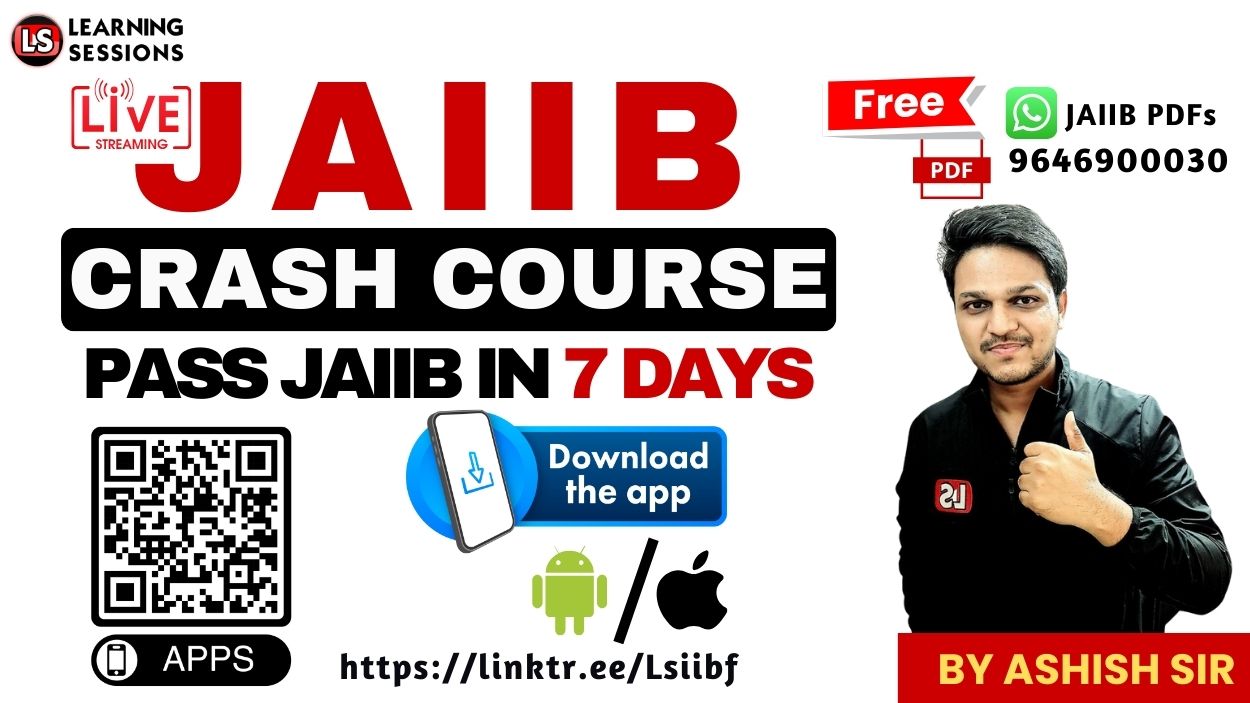Have you ever wondered how currencies are traded globally or what makes foreign exchange rates fluctuate? Understanding the intricacies of the Foreign Exchange (Forex) market is crucial not just for exam preparation, but for anyone interested in international finance. If you’re aiming to pass Paper 1 of the TIRM (Treasury Investment and Risk Management) Diploma, you’re in the right place. This video will walk you through the key concepts of the Forex market, covering everything from NRI accounts to RBI’s role in managing foreign transactions.
Whether you’re a beginner or an intermediate learner, this session is designed to simplify complex topics and help you master the subject with ease. By the end of this video, you’ll have a clear grasp of Forex operations, regulations under FEMA, and the role of major institutions in global finance. So, grab a notebook and get ready to dive in!
👉 “Before we dive in, watch this video for a complete breakdown:”
00:00:02 – Introduction to Foreign Exchange Market
Let’s start with the basics! The Foreign Exchange (Forex) market is where currencies from around the world are bought and sold. It’s the world’s largest financial market, with daily transactions surpassing $6 trillion. This is the heart of global trade, and understanding it is essential for anyone involved in international business or financial management.
For your TIRM exam, knowing how currency pairs work, the role of Forex traders, and how exchange rates are set is a must. These are the fundamentals that lay the groundwork for more advanced topics.
The Forex market operates 24/5, and it’s decentralized, meaning no single entity controls it. The rates at which currencies are exchanged fluctuate due to a variety of factors such as economic conditions, geopolitical events, and market speculation. By understanding the driving forces behind these changes, you’ll be in a better position to assess risks and make informed decisions in your professional career.
00:01:34 – FEMA Regulations: Who Qualifies as an NRI?
Next, let’s get into the specifics of FEMA regulations, especially Regulation 2, which determines who qualifies as a Non-Resident Indian (NRI). According to FEMA, an NRI is an Indian citizen who resides outside India for more than 182 days in the preceding financial year.
This is an important distinction because it influences the way these individuals can engage in financial activities such as holding bank accounts, investing, or participating in business activities back in India.
Understanding this classification is crucial for managing NRI accounts, as these accounts offer different benefits compared to regular accounts. An example to consider: if someone holds an Indian passport but is living in Germany for work, they will be considered an NRI under FEMA regulations. This classification comes with privileges such as tax exemptions on interest income and the ability to invest in certain financial products tailored specifically for NRIs.
00:02:05 – Who is a Person of Indian Origin (PIO)?
PIO status is another important classification. According to FEMA, individuals of Indian origin, such as those whose grandparents were Indian citizens, can avail certain financial privileges like opening NRE and NRO accounts. However, there are specific rules about who qualifies as a PIO.
This is essential knowledge because NRIs and PIOs have access to special investment options and banking facilities, which can be extremely beneficial. A clear understanding of who qualifies as a PIO can help avoid mistakes in account types, especially when making investments or transferring funds between countries.
It’s also important to remember that this status is different from OCI (Overseas Citizen of India), which offers even more benefits, including visa-free travel to India.
00:03:39 – NRE Rupee Account: Key Features
The NRE (Non-Resident External) Rupee Account is designed to help NRIs manage their income earned outside India. Key features include:
- Can be opened by both NRIs and PIOs: This account is not exclusive to NRIs but can also be opened by individuals of Indian origin living abroad.
- Funds are maintained in Indian Rupees: While the source of funds can be foreign, the account balance is always maintained in Indian rupees.
- Joint accounts: Joint accounts can be opened with a resident relative on a former-survivor basis. The NRI is the primary account holder, and the resident relative can operate the account only after the NRI’s death.
Understanding these features ensures you know the specific advantages NRIs get when using these accounts. The primary advantage is the ability to transfer funds between countries without incurring foreign currency conversion fees, while also enjoying tax exemptions on interest income.
00:05:42 – Operations for Power of Attorney Holders in NRI Accounts
If an NRI gives a Power of Attorney (PoA) to a resident relative, the PoA holder can perform certain operations. However, some transactions are prohibited, such as opening new NRI accounts.
Being familiar with PoA provisions is essential to avoid any legal complications and manage NRI accounts efficiently. PoA can be extremely useful for NRIs who may not be able to handle their banking transactions in person. However, the limitations and scope of PoA should be understood clearly to avoid any misuse or confusion about account rights.
00:06:44 – Credit Transactions in NRI Accounts
NRI accounts have specific rules about credit transactions. For instance, inward remittances from abroad and cheque deposits made in the account holder’s name are allowed. However, the transfer of funds from one NRI’s account to another is strictly regulated under FEMA.
These regulations are designed to maintain compliance with the guidelines set by the RBI, ensuring that NRIs do not engage in illegal transactions like money laundering or funding terrorism. Understanding these regulations will help you navigate NRI account operations smoothly and ensure all financial dealings are above board.
00:09:09 – Tax-Free Income in NRI Accounts
Did you know that NRI accounts are exempt from Indian income tax on the interest income earned? That’s right—NRIs can earn tax-free interest on deposits like Fixed Deposits and Savings Accounts. However, other forms of income may still be subject to tax under different provisions.
Understanding this tax exemption is critical for managing your finances and making the most out of NRI banking products. For instance, interest income earned on NRE accounts is not subject to tax in India, making them an attractive option for NRIs who want to save or invest money in India while avoiding hefty tax liabilities.
00:12:41 – Key Characteristics of FCNR Accounts
The Foreign Currency Non-Resident (FCNR) account allows NRIs to hold deposits in foreign currencies. Unlike the NRE account, FCNR accounts are not subject to currency risk because they hold foreign currency.
These accounts are ideal for managing funds from abroad and preventing any fluctuation in the value of the deposit due to exchange rate changes. If an NRI wishes to deposit USD, EUR, or GBP, they can do so directly without worrying about exchange rate fluctuations. This is a great option for individuals who want to keep their deposits in a stable foreign currency.
00:14:46 – Types of Transactions Allowed in NRO Accounts
NRO (Non-Resident Ordinary) accounts serve a specific purpose for managing income earned in India. These accounts can be used for a variety of financial operations, including depositing rent, dividends, and pension payments. It’s crucial for managing income that flows from Indian sources.
For example, if an NRI owns property in India and earns rental income, that income can be deposited directly into an NRO account. This account is also a good choice for managing income from Indian investments like stocks or bonds.
00:17:16 – Managing Currency Risk: Ideal Accounts
Forex risk is a big concern for anyone dealing with multiple currencies. FCNR accounts, as discussed earlier, are ideal for avoiding currency risk because they hold foreign currencies.
For your exam, understanding which accounts help mitigate currency risk will help you advise clients or manage risk in an organization. By knowing how to minimize currency fluctuation risk, you can provide better financial advice to NRIs who are concerned about their global investments.
[FREE PDF] Foreign Exchange Questions | IIBF Treasury Investment & Risk Management
00:25:27 – Multilateral Investment Guarantee Agency (MIGA)
MIGA, a part of the World Bank, helps encourage foreign direct investment by providing guarantees against non-commercial and political risks. This ensures that investors can proceed without fearing losses due to factors outside their control, like political instability.
MIGA’s role in promoting global investment is essential for boosting economic development in emerging markets. For instance, if a country faces political unrest or sudden policy changes, MIGA’s guarantee ensures that foreign investors’ funds are protected.
00:28:10 – Dispute Settlement for Investment Issues
When disputes arise between investors and governments, the International Centre for Settlement of Investment Disputes (ICSID) steps in. This institution helps resolve issues through arbitration, ensuring that investments remain protected.
Understanding the role of ICSID is crucial for anyone involved in international trade or investment, as it ensures a fair and neutral resolution in cases of financial conflicts.
### **Conclusion:**
Today, we covered essential topics that will help you navigate the complex world of Forex markets, NRI accounts, and related banking features. From understanding FEMA regulations to avoiding currency risk, these concepts are integral not just for your TIRM exam but for any global finance operations.
Remember, knowledge is power—use what you’ve learned today to manage foreign exchange risks, optimize NRI account operations, and stay compliant with regulations.
Don’t forget to leave your thoughts in the comments, share any questions you may have, and let me know what other topics you’d like to explore in future videos. Make sure to subscribe for more insightful content like this!
### **Download the PDF:**
To help you revise and practice, download the PDF with detailed explanations, charts, and practice questions related to the Foreign Exchange Market, NRI accounts, and other TIRM-related topics. Just click the link below to get started:
Also Like:







